Abstract
Severely head injured adults were tested on a recognition memory procedure involving the identification of eight recurring shapes among a series of 160. Compared with a control group, the tested patients showed many fewer correct responses. Their type of error was commonly a failure to recognize rather than a false recognition. The severity of the memory deficit was related to the length of post-traumatic amnesia (PTA), but to neither the presence of neurological signs at the time of memory testing, nor to the time after injury at which the patients were tested. The older patients showed a more significant relationship between PTA and memory score than the younger patients.
Full text
PDF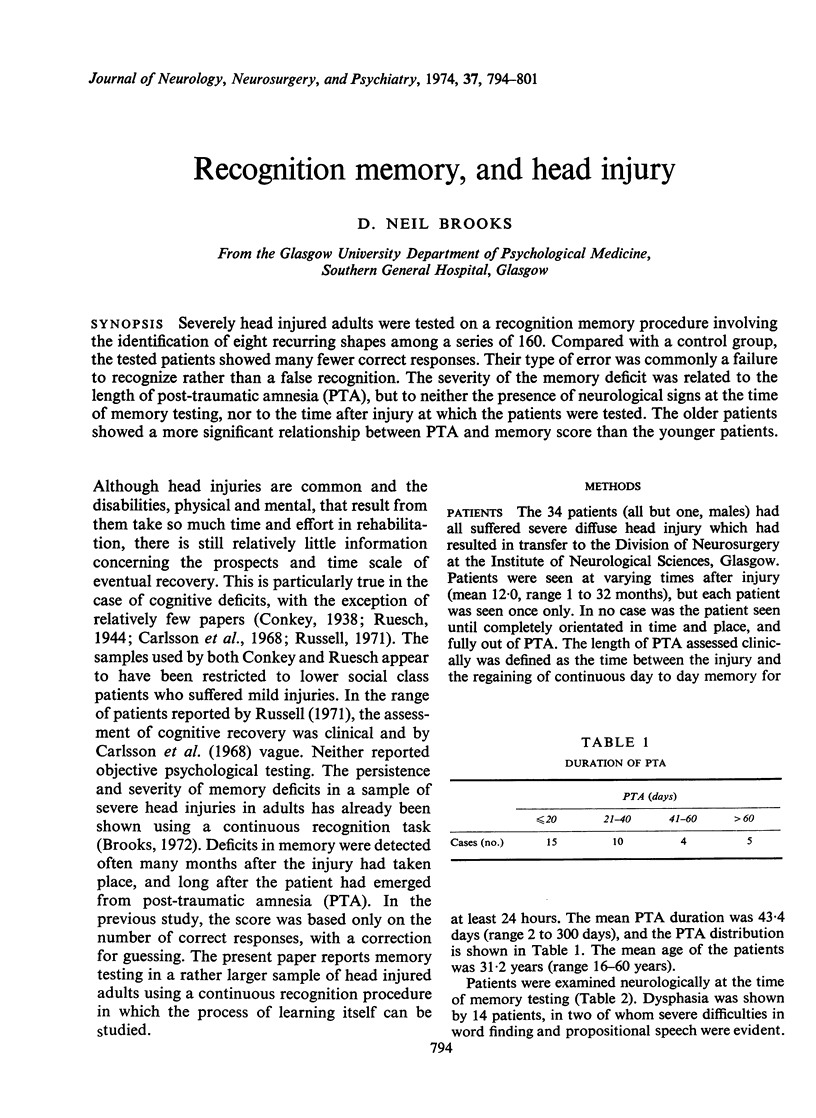
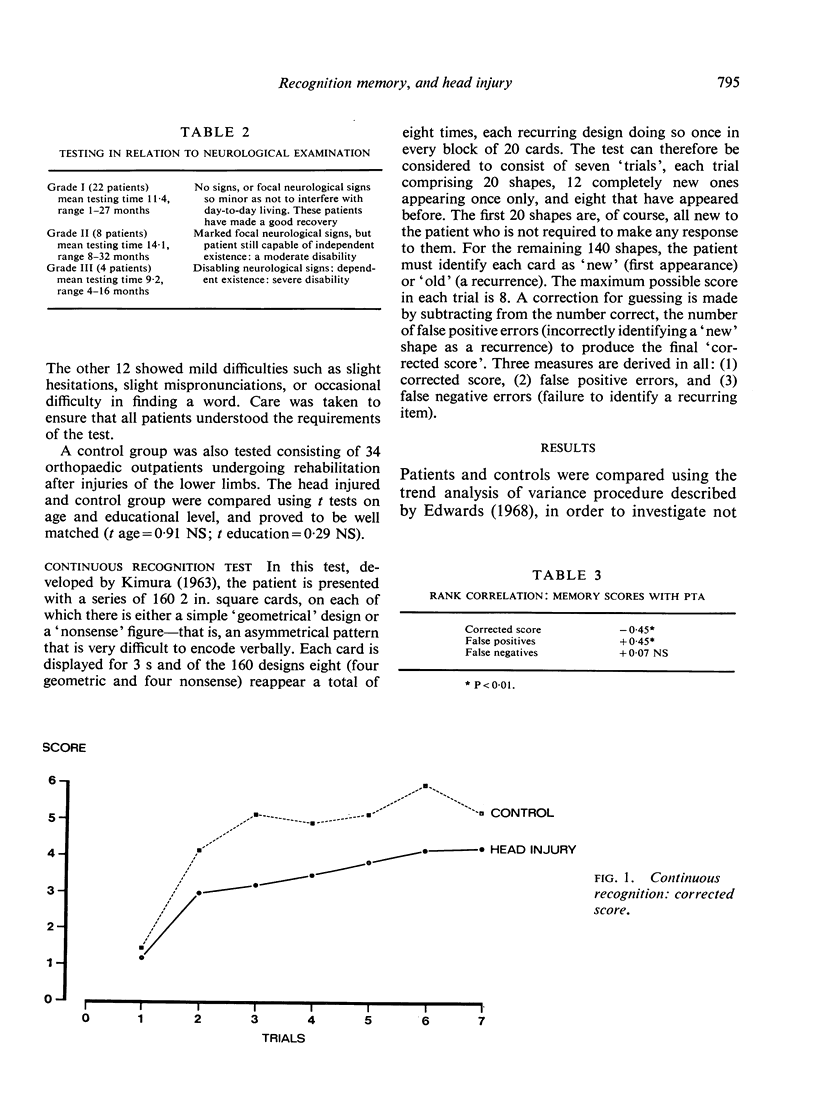
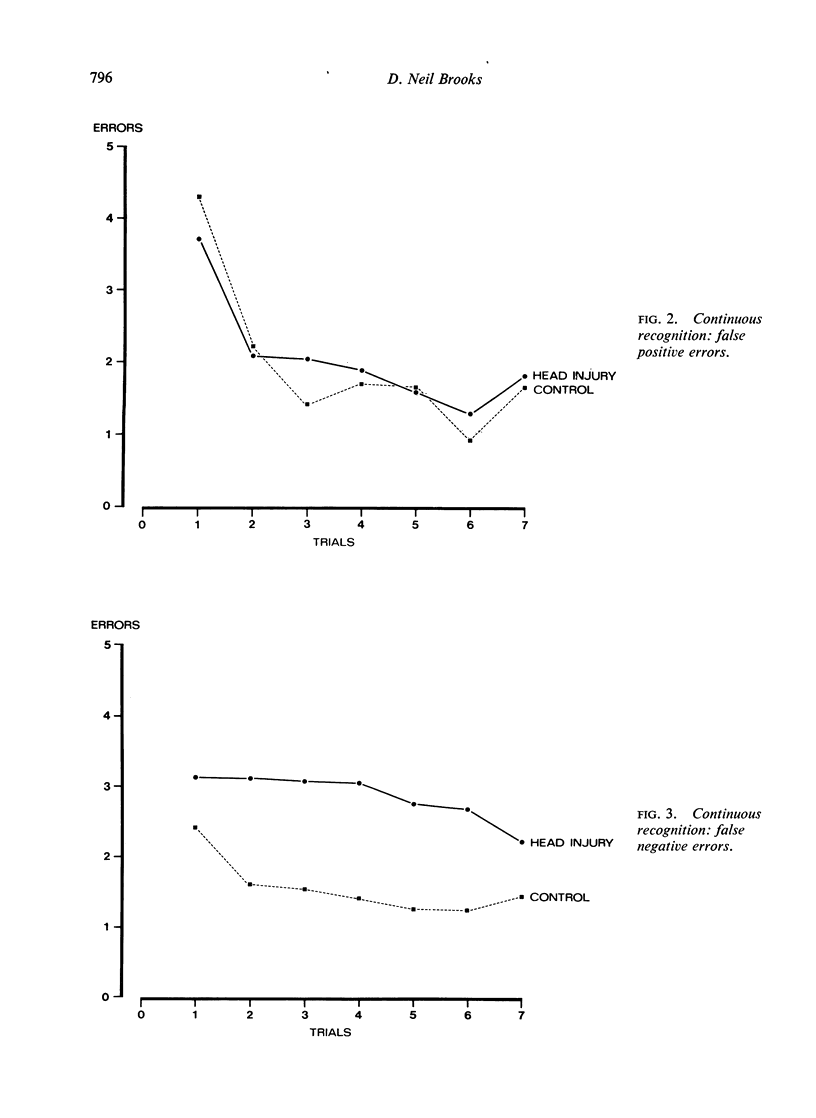
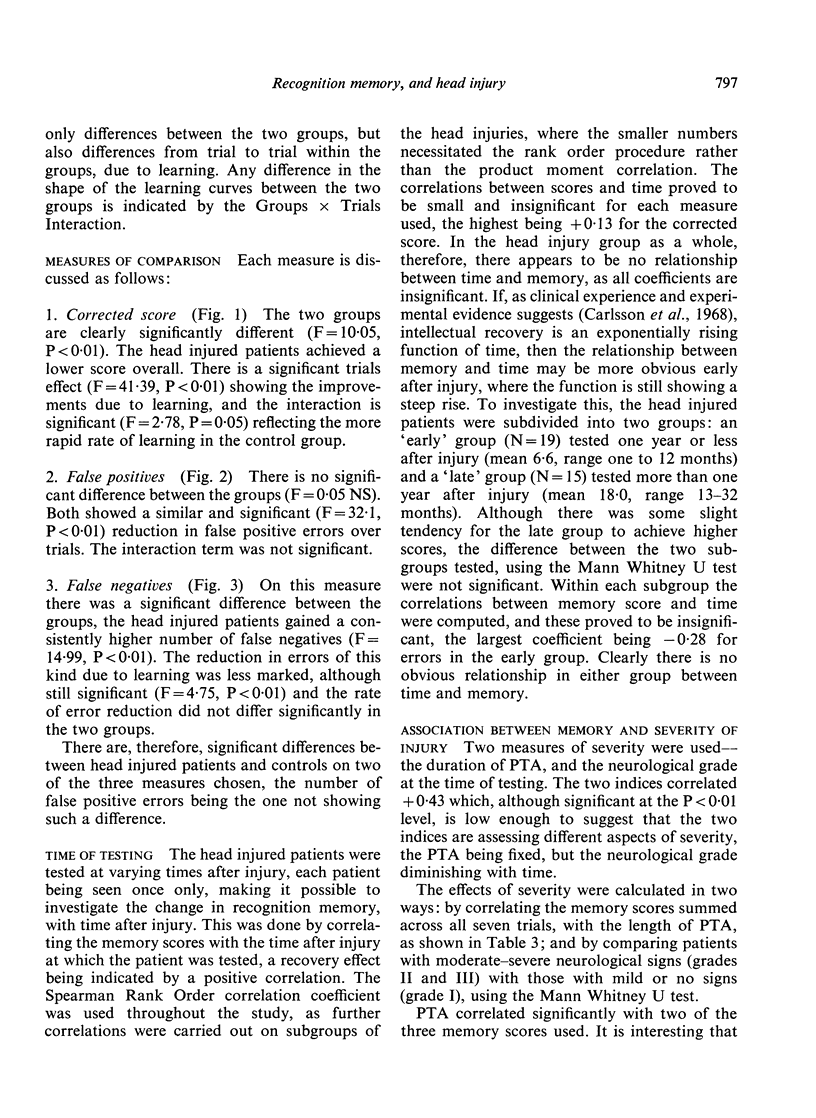
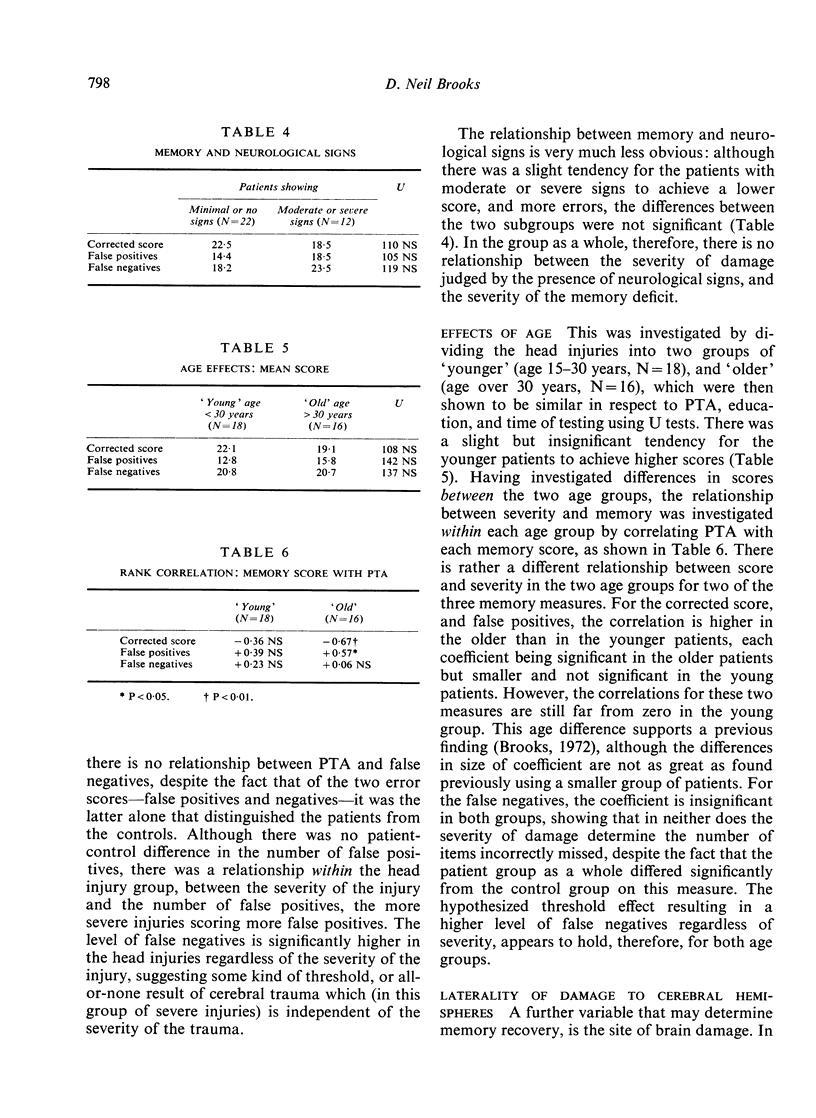
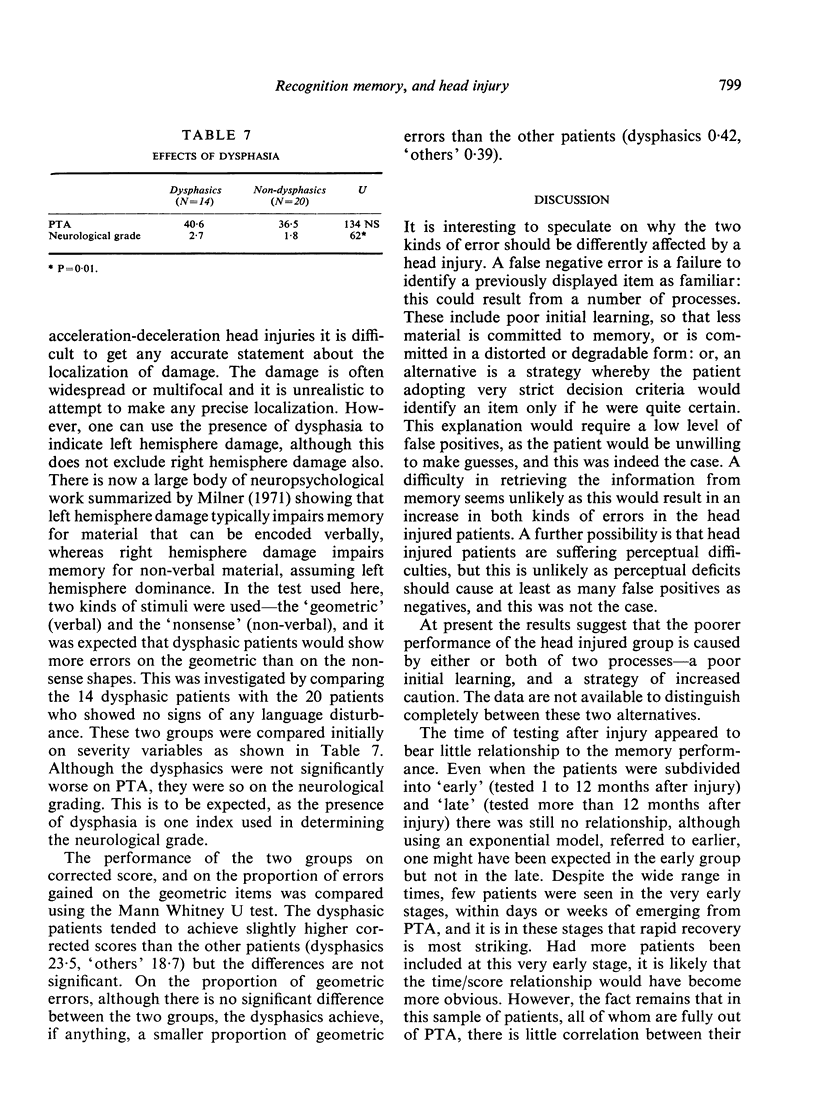
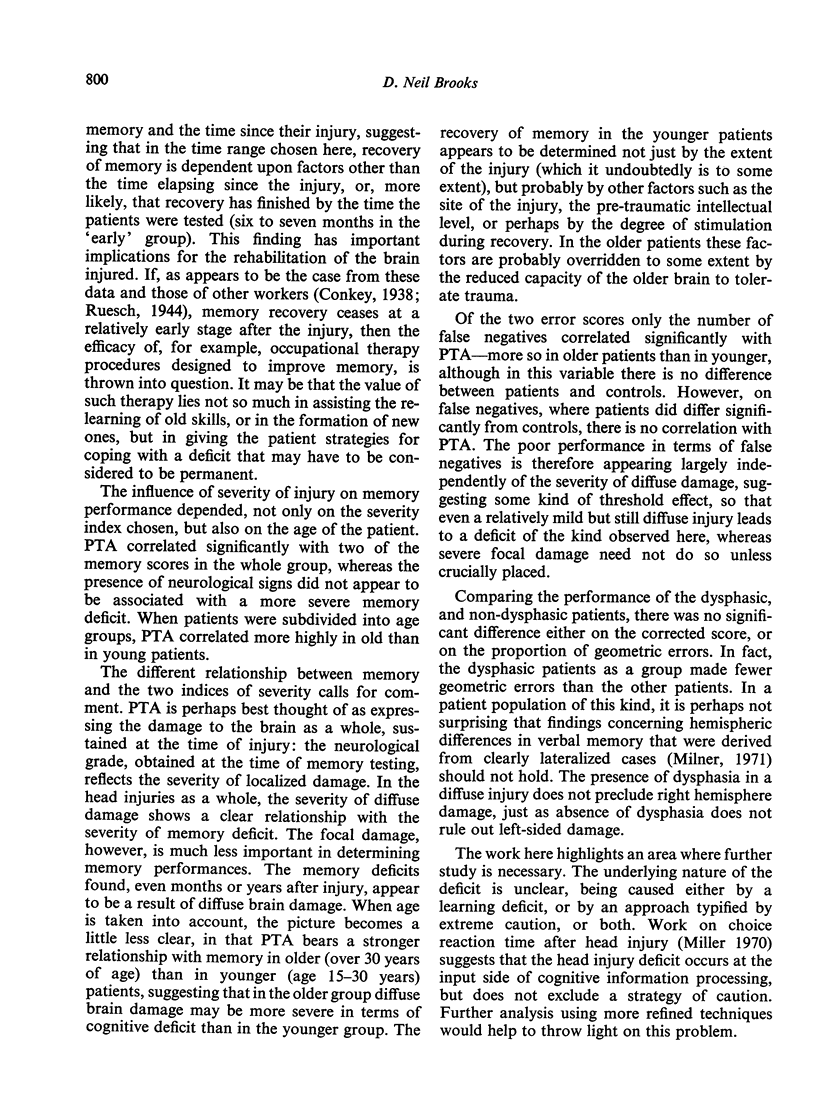
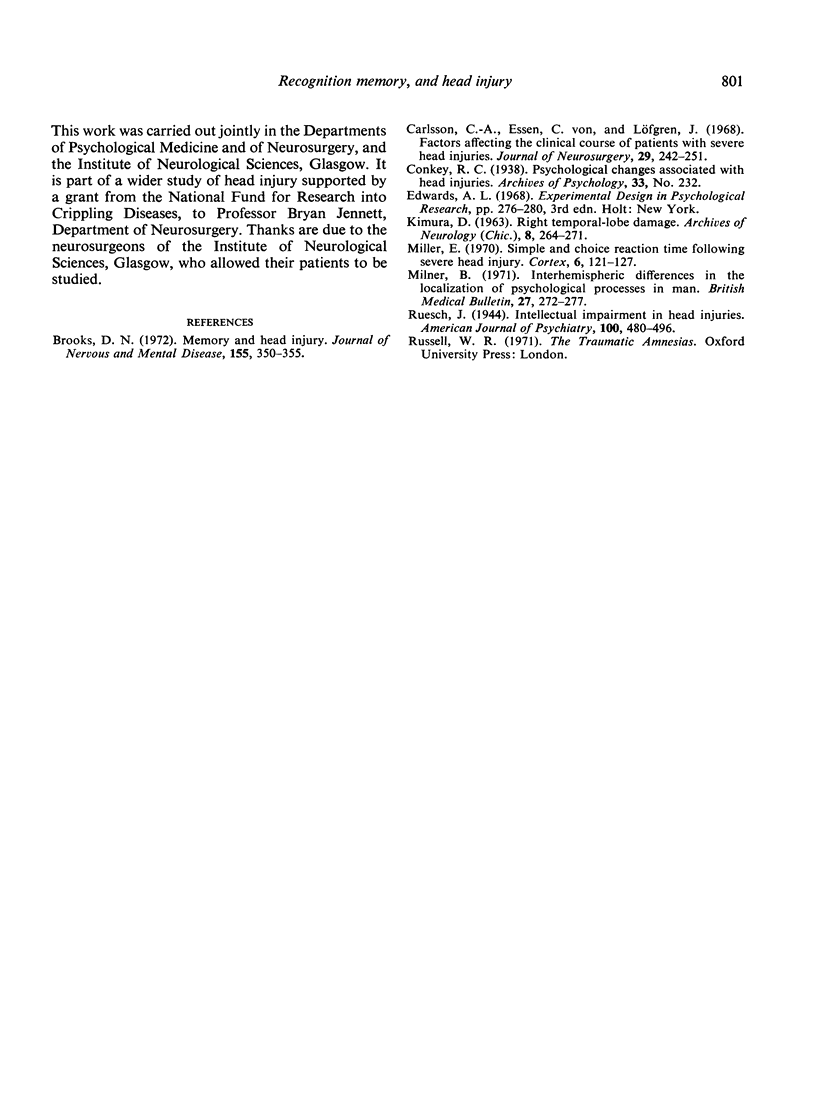
Selected References
These references are in PubMed. This may not be the complete list of references from this article.
- Brooks D. N. Memory and head injury. J Nerv Ment Dis. 1972 Nov;155(5):350–355. doi: 10.1097/00005053-197211000-00007. [DOI] [PubMed] [Google Scholar]
- Carlsson C. A., von Essen C., Löfgren J. Factors affecting the clinical corse of patients with severe head injuries. 1. Influence of biological factors. 2. Significance of posttraumatic coma. J Neurosurg. 1968 Sep;29(3):242–251. doi: 10.3171/jns.1968.29.3.0242. [DOI] [PubMed] [Google Scholar]
- KIMURA D. Right temporal-lobe damage. Perception of unfamiliar stimuli after damage. Arch Neurol. 1963 Mar;8:264–271. doi: 10.1001/archneur.1963.00460030048004. [DOI] [PubMed] [Google Scholar]
- Miller E. Simple and choice reaction time following severe head injury. Cortex. 1970 Mar;6(1):121–127. doi: 10.1016/s0010-9452(70)80040-5. [DOI] [PubMed] [Google Scholar]
- Milner B. Interhemispheric differences in the localization of psychological processes in man. Br Med Bull. 1971 Sep;27(3):272–277. doi: 10.1093/oxfordjournals.bmb.a070866. [DOI] [PubMed] [Google Scholar]


